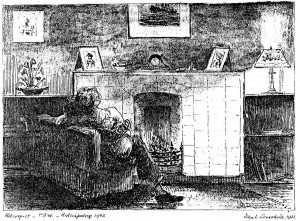Anger, love, grief, guilt, shame, fear, hatred, joy, jealousy, sexual desire – it is impossible to look at individuals’ experiences of war without thinking about these emotions, along with many others.
How were these emotions expressed? To what extent did individuals try to control them? How did they vary between different genders, classes and ethnicities? These are some of the questions I ask myself as I try to work out how it felt to be at war.
I love two things, in particular, about studying emotions in war. First, it makes the past so much more absorbing. Reading about what people at war felt makes it easier for us to connect with them. Second, it requires us to rethink where and how combatants existed. Physically, a soldier in the First World War might have occupied a trench, but emotionally, he was back at home with loved ones.
This idea is central to my research on prisoners of war. We often think of these men as being sealed off by barbed wire from the outside world, but my research shows, in their imagination, they were at home, with their loved ones.
The way in which Commander Jack Croasdaile thought about his wife whilst in captivity is shown in his drawing. He sketched this in 1941 and it shows how he imagined his life would be in 1942: at home in his wife’s arms. The image takes on a particular poignancy in the knowledge that both the wife and two children of Croasdaile were killed when the SS City of Benares was torpedoed by a German U-boat whilst crossing the Atlantic in 1940.
For more on my research on emotions in war, please see my published work, interviews and speaking engagements.

